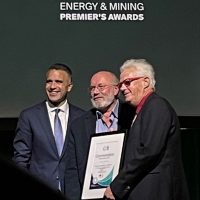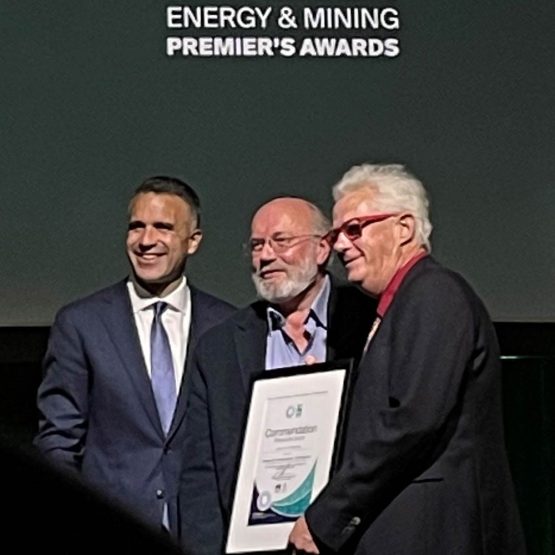Collaborating for technology readiness
Coming up with new ideas is hard, coming up with new ideas that work is even tougher. Bringing those ideas to market introduces another dimension of production, distribution and commercial considerations.
Keen to collaborate with like-minded organisations around mining technology research, in 2019 Maptek joined the Integrated Mining Consortium funded by the Premier of South Australia. High on the agenda alongside finding innovative answers to intractable problems, was the need to identify key steps to bring those ideas to market where they can deliver value to industry.
The Premier’s Research Industry Fund (PRIF) program is also supported by mining companies OZ Minerals, BHP, the University of Adelaide, the University of South Australia and other technology providers.
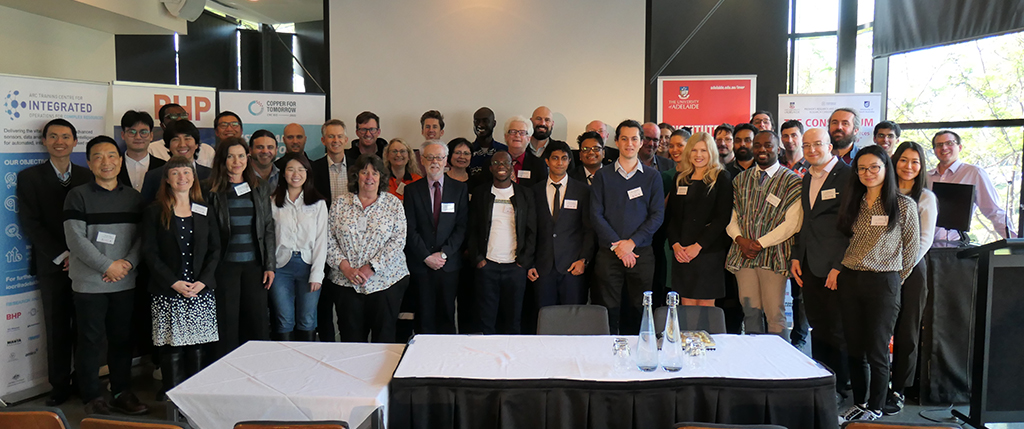
PRIF Integrated Mining Consortium 2021 – 2022
Ahead of the consortium wrap up in early 2023, we spoke to Nigel Cook, director of the PRIF consortium, along with Simon Ratcliffe and Will Reid from Maptek, about their involvement and hopes for the future.
Just before going to press, the Integrated Mining Consortium was highly commended in the Innovation category for the 2022 SA Premier’s Awards. Congratulations to everyone involved.
You can check out the bios for our contributors at the end of the blog.
Q: What do you think are the key ingredients for a positive consortium experience and outcomes?
Reid: Maptek – like many of the industry partners – had a clear role; provide the knowledge needed to educate our academic partners, but also provide the problems for them to solve. This particular consortium had the right mix of professionals who have difficult industry problems to solve, and some of this country’s best emerging thought leaders.
This process was a huge learning experience for everyone involved – myself included. If you aren’t open to being challenged by the people around you, are you sure you’ll be able to explore all possible solutions?
Fortunately we didn’t have this problem – we had people from every project genuinely interested in and open to the problems presented.
The project had three primary contributors from Maptek – Simon Ratcliffe, Mike Stimson and myself. Mike was the brains behind the optimisation changes that demonstrated the practical part of our work. Simon was able to take the theoretical concepts from our academic partners and translate them into mining terms that Mike could implement.
I sat in as the scheduling expert and we used Maptek Evolution as the mechanism to evaluate our results. I ran more than 1000 tests in Evolution, providing the good (and bad) news to Simon and Mike as changes were being made.
Ratcliffe: I think everything starts with the right people – people who are confident enough and good enough in what they do to be open to being challenged and influenced by a diversity of viewpoints and factors.
A culture that builds that right balance of resilience and agility is a key ingredient for a successful consortium appearance. This means building an environment where excellence, trying and failing are collectively owned and celebrated. People need to know and trust each other for this to occur and so working in proximity to the diversity of skills required for outcomes in the consortium is essential.
Q: What are the challenges – perceived and actual – for technology research projects?
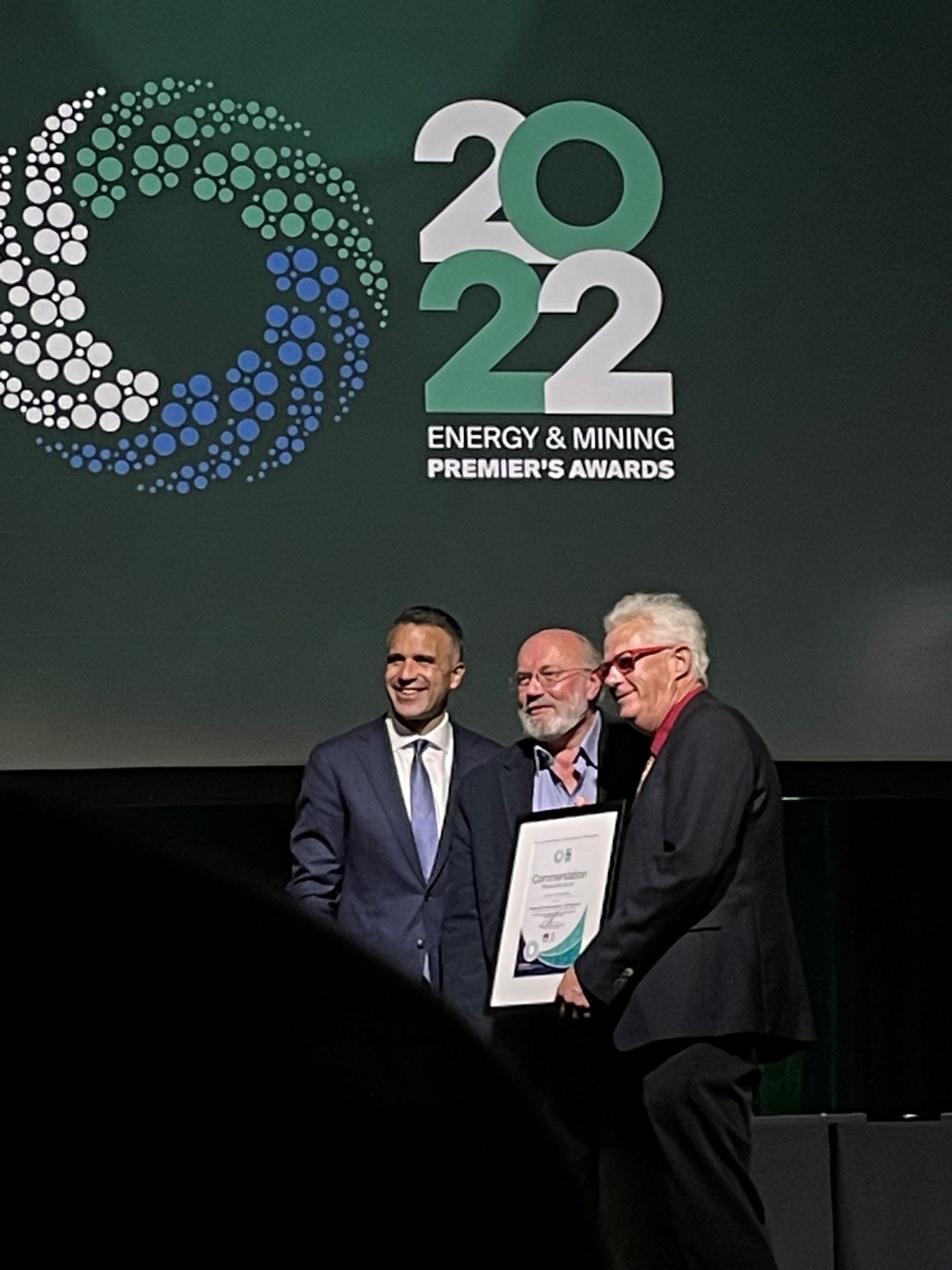
PRIF Consortium Director Nigel Cook accepting Commendation
Cook: Technological research is highly challenging and far more great ideas end up being abandoned than those which succeed and are subsequently turned into marketable products. The challenges are many-fold. There are issues of designing a product that is cost-effective, which actually solves a problem, and which can be developed, tested and brought to market within a reasonable timeframe.
Other challenges include:
- Considering the competition – sharing IP enough to galvanise results but not giving away secrets before they are protected.
- Developing a product that is sufficiently user-friendly that it will be used… and used correctly.
- Tech that is robust, reliable and able to cope with real-world complexity – in the case of algorithms/software applications – or especially harsh conditions – in the case of on-site sensors.
Critical for success is to find a champion – a company as much as an individual – who shares the researcher’s passion to not only carry out a successful project but to ensure that outputs are given every opportunity to mature into a potentially saleable product.
Effective dialogue and communication are essential to develop a relationship based on shared goals: find common language, understand the problem, and address risks and uncertainties.
During the lifetime of the PRIF consortium, we have experienced other challenges. The mining industry is often held to be conservative, with sentiments such as Why change things when they still work? Frequent role changes in end-user organisations have made it hard to cement long-term interpersonal relationships. And not least, an over-reliance on a lean workforce in industry without sufficient resources to address complex R&D issues that, although potentially beneficial, still require significant investment of time and/or capital expenditure.
Ratcliffe: The key challenge by far is crossing the chasm between having an excellent idea and taking it to a point where you can tell people about it, and then there is still work to be done to claw your way to a practical solution that is economically relevant and sustained by the industry.
R&D is difficult enough, time consuming and can in itself be costly, but its practitioners often do not appreciate that an outcome from R&D is just the beginning of a pathway to commercial success, one that can be equally difficult, likely just as time consuming and almost certainly more costly.
Miners on the other hand want something that works and gives results and do not necessarily appreciate the precariousness of taking a concept to a solution for them. This is the chasm that companies like Maptek attempt to bridge.
Q: How hard is it to balance the theory with the practical, or commercial realities?
Cook: Researchers often have an excellent command of their subject matter but don’t always have knowledge of the overall context, or the actual needs of collaboration partners. Dialogue is critical throughout the process of designing a project, seeing it through, and tailoring outcomes for the potential user.
In doing so, researchers need to be prepared to go beyond their traditional discipline boundaries, understand concepts from far-flung fields, and above all, learn to appreciate the economic perspectives of both their invention/innovation, and also the broader mining-processing value chain.
Throughout the lifetime of the consortium, we have endeavoured to expose our students and postdoctoral researchers to broader issues, encourage interdisciplinary approaches, and ensure that a partnership with industry is not only proposed but carried out in practice on a routine basis. This has been achieved by regular seminars and workshops involving our industry partners and by bringing the group together as a team with common goals rather than as a loose grouping of talented individuals.
Unfortunately, academics do not always possess a strong understanding of commercial realities, often leading to great science but relatively low levels of implementation. This reality necessitates the involvement of experts in that area, and a willingness to take advice and let technological development (and implicitly commercialisation and implementation) be guided by people who understand the needs of industry as well as the broader landscape.
Q: Is Australia tackling the R&D differently to other parts of the globe?
Ratcliffe: Australia enjoys a decades-long reputation for being innovative with R&D in the mining landscape, a position many would argue is the envy of other mining countries. Yet we still manage to starve homegrown ideas of the critical capital and time that is needed to go from idea to success. We are in a boom time in this space at present, yet so much more could be done to improve outcomes.
I do fear that in the next downturn the industry will revert to sourcing solutions from elsewhere because ‘elsewhere must be better at it than we are in Australia’. If anything, ‘elsewhere’ is where Australia should be focussed on delivering its world class mining technology solutions coming from the robust R&D environment (institutionalised and on the ground) that we have established.
Q: What are the benefits of industry partners such as Maptek contributing to research programs?
Cook: The PRIF consortium has benefited greatly from the involvement of different industry partners, each with their own interests and position in the market. The involvement of partners like Maptek has provided us with real-world problems to address, including real data that has all the complexities often ignored in more theoretical studies. It has also contributed context for the research, based on need rather than intellectual curiosity, and expert advice based on in-depth knowledge of industry needs and markets that allows us to provide informal mentoring to early-career professionals.
Potential pathways for future development, commercialisation and implementation of PRIF consortium outputs, including co-design of commercialisation roadmaps, and introducing us to other potential partnerships, is a significant benefit of industry involvement.
Likewise, we hope that participation in the PRIF consortium has benefitted Maptek and other partners in terms of exposure to new ideas and approaches, potential links with other partners, and access to a mature, well-rounded future workforce.
Reid: While Maptek contributed to a small number of projects, we took an interest and offered advice to several other problems being investigated. It was really positive to see people take our thoughts and opinions seriously, and equally as encouraging when they offered potential changes to our project approach.
This also led to a moment that resonated with me – seeing our project sponsors become excited by what we were producing. They were able to see how the solution could be applied in the real world, and to their current operations.
Our project came in two parts, and so did our feelings about the results. In the first part of the project we were able to visualise the result of uncertainty in geological models. This was a real ‘wow’ moment as it had previously not been quantified in this way. It gave us real motivation to then use that uncertainty to try and optimise out the risk.
As we moved to the second part of the project – using the results of uncertainty to make effective decisions to the schedule – we struggled to quantify success due to the amount of geological noise inherent in large operations. We were able to work past this and produce good results, but the delay [bottleneck] took us by surprise.
One of the most exciting outcomes is devising an effective mechanism to visualise and quantify uncertainty. This can be applied by geologists and mining engineers who have multiple realisations of their geological model to see where additional drilling is needed and to quantify the risk around that uncertainty.
The second part of our work is ongoing and if successful will minimise the effect of that uncertainty by making more confident mining block choices. We hope to publish our second paper on the topic in 2023.
Coming from an academic family, I was thrilled to be able to assist in producing my first paper!
Q: What’s the human impact of ensuring we prepare for the future and what is the next big challenge?
Ratcliffe: The human impact of not being up to this task is incalculable loss of human life and human-induced stresses and strains on our natural world the likes of which we have not seen before. For people in mining, the gravity of this situation needs to not lead to conservative thinking and paralysis, but rather an openness to new methods, new ideas and new skills to complement and augment what is already being done well whilst leaving behind counter-productive practices and outcomes.
There is a large and important role here for translating research thinking and outcomes into solutions that are approachable by and practical to both exploration and mining companies.
There’s a broad-based consensus nowadays that climate change is indeed anthropogenic and that we need to decarbonise our societies to first mitigate and then hopefully reverse its effects over the coming centuries. Not only that, but humankind will also need to invest trillions in direct mitigation measures such as bolstered flood, wave, wind and fire protection of people and infrastructure.
This is arguably the largest collective enterprise in human history and the basis of any chance of success will come from an abundance of construction, electrification, battery storage and computational materials to get the job done. Materials in the required quantities can only come from one source: mining. The next big challenge is preparing the mining industry so that it is up to this monumental task.
Q: Can you tell us more about the goal of ‘integrating all of these solutions into a comprehensive ESG framework’? What will the ultimate benefits be?
Cook: The last decade has seen a rapid awareness that technological development is not only intrinsically linked to economic realities but also to evolving ESG goals. The world needs minerals like never before, and coupled with a decrease in discovery of new resources and declining grades in existing operations, miners face major challenges to meet ESG targets, compounded by ever greater public and regulatory scrutiny.
The PRIF Consortium aims, through its inventions and innovations, to create a safer, more secure workplace, a mining sector that has the social licence to operate, and a minerals industry that is committed to causing as little environmental disturbance as possible, using less water, energy and chemicals, and reducing waste. These are formidable aims but through optimisation and increases in efficiency at all stages of the value chain, we believe we have a significant contribution to make.
If widely implemented across the industry, these contributions can ensure significant savings. Examples would include PRIF consortium projects targeting a reduction in energy and water for milling, or sensors that allow better monitoring of processing operations that can deliver improved throughput and metal recoveries. Our solutions assist to support a vibrant, efficient minerals industry that can be acknowledged to play a positive role in the transition to a low-carbon future.
Ratcliffe: Collaborative ecosystems are difficult to just create and ‘switch on’. But once they are up and going, they are very sustainable, robust and resilient things able to adapt to circumstances and adopt new best practices very quickly.
If Maptek can create a platform that enables IP that would otherwise forever be stranded at the research stage to have a commercial pathway into the mining sector, then this would be transformational to the mining industry.
About our contributors
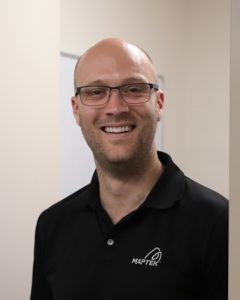 Will Reid is Maptek Global Development Strategy Manager for a portfolio of scheduling and blast management products, producing solutions that empower customers to optimise their operations and improve productivity and profitability. Will’s enthusiasm for software and mining allows him to apply an innovative computer science and data-driven approach to solving complex mining problems.
Will Reid is Maptek Global Development Strategy Manager for a portfolio of scheduling and blast management products, producing solutions that empower customers to optimise their operations and improve productivity and profitability. Will’s enthusiasm for software and mining allows him to apply an innovative computer science and data-driven approach to solving complex mining problems.
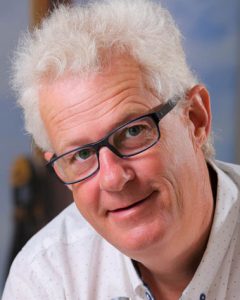 Professor Nigel Cook works in the School of Chemical Engineering at the University of Adelaide. He is Director of the Premier’s Research and Industry Fund Innovative Mining Consortium program, was previously Director of the ARC Research Hub for Australian Copper-Uranium and was recently named as Australia’s top expert in the field of Geochemistry and Mineralogy!
Professor Nigel Cook works in the School of Chemical Engineering at the University of Adelaide. He is Director of the Premier’s Research and Industry Fund Innovative Mining Consortium program, was previously Director of the ARC Research Hub for Australian Copper-Uranium and was recently named as Australia’s top expert in the field of Geochemistry and Mineralogy! Simon Ratcliffe has worked on various Maptek hardware and software development projects since 1995. As Chief Technology Officer he drove the strategic objectives for solutions development to meet industry needs and now as Head of Experimentation, Simon focuses on identifying and exploring new ideas for technology applications.
Simon Ratcliffe has worked on various Maptek hardware and software development projects since 1995. As Chief Technology Officer he drove the strategic objectives for solutions development to meet industry needs and now as Head of Experimentation, Simon focuses on identifying and exploring new ideas for technology applications.

